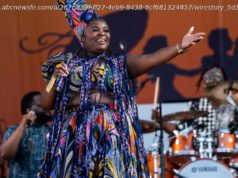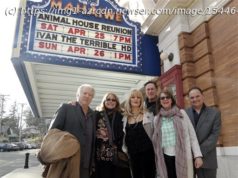Forty years after the musician’s death, a writer revisits conversations with the former Beatle about the long period of seclusion and self-reflection that inspired his breakthrough as a solo artist, and as a human being.
Could there possibly be an upside to the long, stressful periods of isolation that so many people have endured during the pandemic lockdown of 2020? When we emerge, will we see the world in a new way? Could there even be a silver lining to these months of quiet living and self-reflection? Four decades ago, I heard firsthand how a long period of solitude changed an extraordinary figure who was determined to make his life have meaning: John Lennon, who is being mourned by millions on Tuesday, the 40th anniversary of his murder. There was no pandemic in late 1975 when Lennon and Yoko Ono, the most public of personalities, withdrew for what became a five-year hiatus from interviews and recording following the birth of their son, Sean. But for Lennon there was plenty of existential angst, and actual fear. He was living in New York City, still seeking a green card and fighting deportation. Though the Beatles had stopped making music, it would take years to dissolve legal ties, and the band’s shadow enveloped his life. Collections of classic Beatles songs were recycling the Fab Four’s greatest hits, leaving Lennon to worry if he could ever live up to the public demand that the Dream Band reunite. Paul McCartney soared up the charts with Wings, but Lennon hadn’t had a No.1 album since “Walls and Bridges” in 1974, with Elton John’s assist on “Whatever Gets You Thru the Night.” It was time for him to start over. He would later tell me that musically, his mind was cluttered, filled with static like a car radio. “The messages were as confused coming in as they were going out.” In early 1976, he and Yoko went into a self-imposed lockdown. His movements weren’t limited, and his finances were secure, but he shut off the outside world to find his purpose again. During those years, while Ono took over the business and dealt with the lawyers from her downstairs office at the Dakota, where they lived on the Upper West Side, Lennon was the ultimate homebody. Staff in the apartment on the seventh floor recall hearing him happily playing the white piano in the couple’s all-white living room overlooking Central Park, and singing Beatles songs, one after the other. He was shaping his days around Sean, he said: up at 6 a.m., “have a cup of tea — no caffeine — and plan what Sean’s going to have for breakfast, and he comes out, we communicate, and then I’m thinking about the next meal, like Mrs. Higgins, in Wisconsin,” he said. His epiphany came in 1979 after Ono suggested he take a journey alone to Hong Kong and Singapore, to reconnect to the non-god — the person he had been and not the celebrity he became. As he explained, the isolation not only inspired a breakthrough as an artist, but as a human being. And in September 1980, as abruptly as it had begun, the pair ended their seclusion, returning to the studio to record a collaborative album. They granted me their first interview in five years, for Newsweek magazine, where I was a young pop music writer. (Ono asked for my birth date and said I checked out, numerologically.) “Double Fantasy” was full of Lennon’s vulnerable love songs (written to his wife and son) and Ono’s au courant dance rock. “Hi, I’m Howard Garbo, or is it Greta Hughes today, mother?” Lennon quipped when Ono introduced us at the Hit Factory two months before his 40th birthday.






